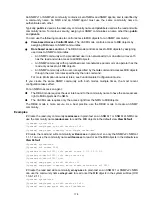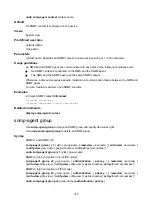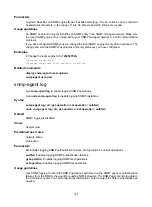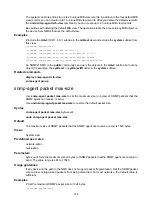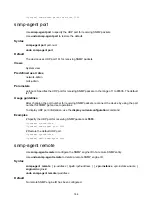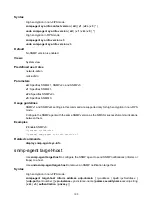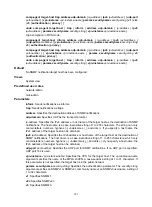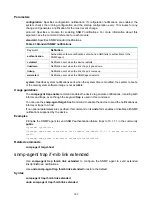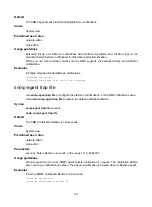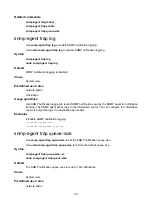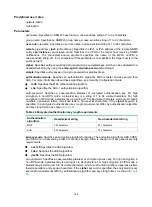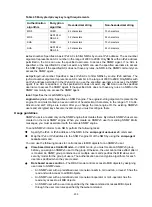
192
•
authentication
: Specifies the security model to be authentication without privacy. You must
specify the authentication key when you create the SNMPv3 user.
•
privacy
: Specifies the security model to be authentication with privacy. You must specify the
authentication key and privacy key when you create the SNMPv3 user.
Usage guidelines
You can specify multiple SNMP notification target hosts.
Make sure the SNMP agent uses the same UDP port for SNMP notifications as the target host.
Typically, NMSs, for example, IMC and MIB Browser, use port 162 for SNMP notifications as defined
in the SNMP protocols.
If none of the keywords
v1
,
v2c
, or
v3
is specified, SNMPv1 is used. Make sure the SNMP agent
uses the same SNMP version as the target host so the host can receive the notification.
If neither
authentication
nor
privacy
is specified, the security model is no authentication, no
privacy.
Examples
# Configure the SNMP agent to send SNMPv3 traps to 10.1.1.1 in the user
public
.
<Sysname> system-view
[Sysname] snmp-agent trap enable standard
[Sysname] snmp-agent target-host trap address udp-domain 10.1.1.1 params securityname
public v3
Related commands
snmp-agent
{
inform
|
trap
}
source
snmp-agent
trap
enable
snmp-agent
trap
life
snmp-agent trap enable
Use
snmp-agent trap enable
to enable SNMP notifications globally.
Use
undo snmp-agent trap enable
to disable SNMP notifications globally.
Syntax
snmp-agent
trap
enable
[
configuration
|
protocol
|
standard
[
authentication
|
coldstart
|
linkdown
|
linkup
|
warmstart
] * |
system
]
undo
snmp-agent
trap
enable
[
configuration
|
protocol
|
standard
[
authentication
|
coldstart
|
linkdown
|
linkup
|
warmstart
] * |
system
]
Default
SNMP configuration notifications, standard notifications, and system notifications are enabled.
Whether other SNMP notifications are enabled varies by modules.
Views
System view
Predefined user roles
network-admin
mdc-admin

